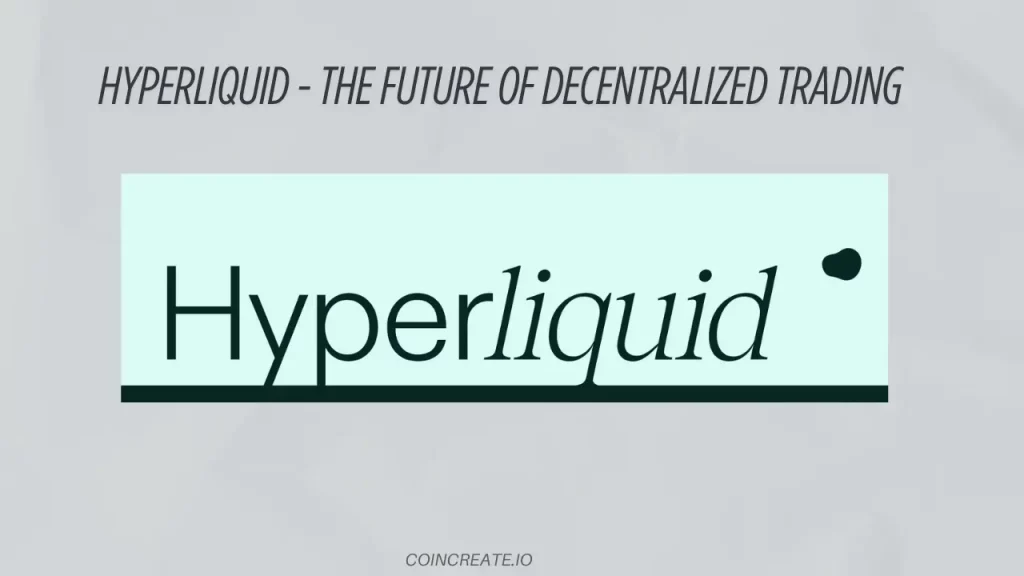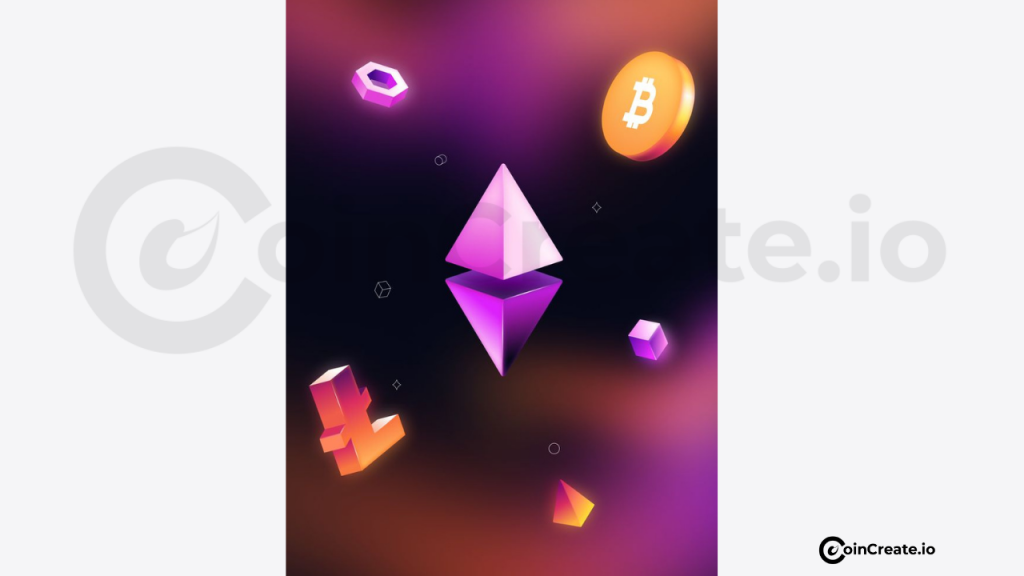Hyperliquid Guide -The Future of Decentralized Trading
You’re navigating the fast-paced world of decentralized finance (DeFi), and Hyperliquid has likely caught your eye. With its promise of centralized exchange (CEX) speed and decentralized exchange (DEX) transparency, this platform is redefining perpetual futures trading. Built on its own Layer-1 blockchain, Hyperliquid combines cutting-edge technology with user-centric features. In this guide, you’ll discover what Hyperliquid is, how it works, its unique strengths, potential risks, and why it’s a game-changer in DeFi. Let’s dive in.

What Is Hyperliquid?
Hyperliquid is a decentralized perpetual futures exchange (DEX) powered by its proprietary Layer-1 blockchain, Hyperliquid L1, and its Ethereum-compatible virtual machine, HyperEVM. Launched in 2023 by Hyperliquid Labs, the platform specializes in high-speed, low-fee trading of perpetual contracts, allowing you to speculate on crypto prices without owning the underlying assets. Unlike traditional DEXs like Uniswap, which rely on automated market makers (AMMs), Hyperliquid uses a fully on-chain order book, delivering a trading experience rivaling CEXs like Binance or Kraken.
The native token, HYPE, launched via a historic airdrop in November 2024, powers the ecosystem. With over 300,000 users and $4 billion in daily trading volume, Hyperliquid is a leader in decentralized perpetuals, commanding over 50% of the market share in this space by October 2024.
The Technology Behind Hyperliquid
Hyperliquid’s performance stems from its custom-built infrastructure. Here’s what makes it tick
Hyperliquid L1 and HyperBFT Consensus
Hyperliquid operates on its own Layer-1 blockchain, optimized for financial applications. Its consensus mechanism, HyperBFT, is a proof-of-stake (PoS) algorithm inspired by HotStuff and Tendermint. HyperBFT processes up to 200,000 transactions per second with sub-second block finality, far surpassing Ethereum’s 15–30 transactions per second. This speed enables real-time order matching and settlement, crucial for high-frequency trading.
However, Hyperliquid’s 16 validators—compared to Ethereum’s 800,000—make it more centralized, raising concerns about decentralization. While this structure boosts efficiency, it’s a trade-off you should consider.
HyperEVM
The HyperEVM extends Hyperliquid’s capabilities by supporting smart contracts, similar to Ethereum. Developers can build DeFi applications leveraging Hyperliquid’s high throughput and liquidity. This opens the door to lending protocols, NFT marketplaces, and more, positioning Hyperliquid as a full-fledged DeFi ecosystem.
On-Chain Order Book
The HyperEVM extends Hyperliquid’s capabilities by supporting smart contracts, similar to Ethereum. Developers can build DeFi applications leveraging Hyperliquid’s high throughput and liquidity. This opens the door to lending protocols, NFT marketplaces, and more, positioninUnlike AMM-based DEXs, Hyperliquid’s on-chain order book matches buyers and sellers directly, reducing slippage and ensuring price transparency. You can place limit, market, stop-loss, or scale orders with up to 50x leverage, mimicking CEX functionality. The platform supports over 30 tokens, including BTC, ETH, SOL, and AVAX, with plans for community-driven token listings. g Hyperliquid as a full-fledged DeFi ecosystem.
Key Features You’ll Love
One-Click Trading
No repetitive wallet approvals—trade seamlessly with a single click.
Low Fees
All traders enjoy the same low taker fees, with referrers earning 10% of referees’ fees. Most fees fund the Hyperliquidity Provider (HLP) vault, rewarding liquidity providers.
High Leverage
Trade perpetuals with up to 50x leverage, but beware—leverage amplifies both gains and losses.
Copy-Trading Vaults
Deposit funds into user-managed vaults or the HLP to earn profits based on expert traders’ strategies. The HLP also handles market-making and liquidations, ensuring liquidity.
Cross-Chain Deposits
Bridge USDC from over 30 chains (e.g., Ethereum, Arbitrum, Solana) via Hyperliquid’s EVM bridge, secured by its validator set.
No KYC
Sign up with just an email, preserving your privacy.
Developer APIs
Build automated trading bots or custom tools using Hyperliquid’s REST and WebSocket APIs.
The HYPE Token
HYPE is the lifeblood of Hyperliquid, used for governance, staking, and fee discounts. Launched on November 29, 2024, via one of crypto’s largest airdrops, HYPE rewarded over 90,000 users, cementing Hyperliquid’s community-first ethos. As of April 2025, HYPE trades at approximately $18–20, with a market cap of $6–8 billion and a circulating supply of 330 million tokens.
Tokenomics
| Category | Allocation |
|---|---|
| Future Emissions & Rewards | 38.9% |
| Genesis Distribution | 31% |
| Core Contributors | 23.8% |
| Hyper Foundation Budget | 6% |
| Community Grants | 0.3% |
By staking HYPE, you earn rewards and influence governance decisions, such as protocol upgrades or new market listings. Trading with HYPE also reduces fees, incentivizing long-term holding.
Why Hyperliquid Stands Out
Hyperliquid bridges the gap between CeFi and DeFi, offering:
- CEX-Like Experience: Fast execution, intuitive interface, and advanced tools like high-frequency trading support.
- DeFi Transparency: Every order, trade, and liquidation is on-chain, verifiable by anyone.
- Community Focus: Self-funded and VC-free, Hyperliquid prioritizes users over external investors.
- Scalability: HyperEVM enables a growing ecosystem of DeFi apps, from lending platforms like HyperLend to NFT hubs like Drip Trade.
By Q1 2025, Hyperliquid’s total value locked (TVL) reached $1 billion, ranking it #11 among blockchains, with perpetuals volume exceeding $600 billion since launch.
Risks and Criticisms
Centralization Concerns
With only 16 validators, Hyperliquid is less decentralized than Ethereum or Solana, potentially increasing the risk of collusion or censorship.
Lack of Battle-Testing
As a new protocol, Hyperliquid hasn’t faced a major cyberattack or market crash, raising questions about its resilience.
Withdrawal Limitations
Only USDC is supported for withdrawals, requiring conversion for other assets, which may inconvenience you.
Market Volatility
HYPE’s price has fluctuated significantly (all-time high: $34.96; low: $3.81), and leverage trading amplifies financial risks.
Getting Started with Hyperliquid
Set Up a Wallet
Use a self-custody wallet like MetaMask or Trust Wallet.
Bridge USDC
Transfer USDC to Arbitrum (Hyperliquid’s only supported source chain) via a CEX or bridge. Then, deposit it to Hyperliquid’s EVM bridge.
Connect to Hyperliquid
Visit app.hyperliquid.xyz, connect your wallet, and sign up with your email.
Start Trading
Deposit USDC, explore perpetuals or spot markets, and use tools like limit orders or copy-trading vaults.
Buy HYPE
Purchase HYPE on Hyperliquid DEX, KuCoin, Gate.io, or Bitget for staking or fee discounts.
Tax Reporting
Hyperliquid integrates with tools like CoinLedger, allowing you to import transaction history and generate tax forms effortlessly.
The Future of Hyperliquid
Hyperliquid is poised to reshape DeFi. Its Season 3 airdrop, speculated for 2025, could further boost adoption, with 38.8% of HYPE reserved for future rewards. The HyperEVM ecosystem is expanding, with protocols like KittenSwap (DEX), HyperLend (lending), and Drip Trade (NFTs) gaining traction. As DeFi demand grows, Hyperliquid’s high throughput, low fees, and developer-friendly platform make it a strong contender.
However, challenges remain. Increasing validator count, enhancing security, and surviving market stress tests will be critical to maintaining trust. If Hyperliquid delivers, it could become the go-to hub for decentralized trading and beyond.
Final Thoughts
Hyperliquid offers you a powerful blend of speed, transparency, and advanced trading tools, backed by a high-performance Layer-1 blockchain. Whether you’re a seasoned trader or a DeFi newcomer, its one-click trading, low fees, and community-driven ethos make it worth exploring. But stay cautious—centralization risks and market volatility require careful consideration. Dive into Hyperliquid, bridge your USDC, and experience the future of decentralized trading. Just don’t forget to manage your risks and do your own research.

